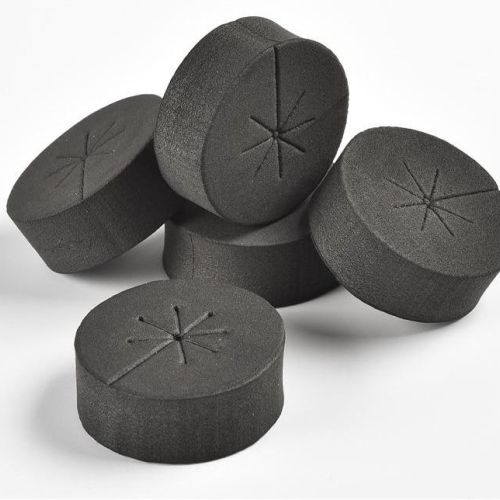Grow Watermelon
1639 in stock
Product Type: Bonsai
Cultivating Difficulty: Very Easy
Grow Cycle: Annual
Climate: Temperate
Full-bloom Period: Summer
Quantity: 20pcs
Summer plants with a voracious appetite for warmth, water, and space. The mouth-watering fruits take about 3 months to mature from seeds. Like their fellow members of the cucurbit family (squash and cucumbers) melons thrive in warm weather, take up lots of space, and need regular, ample water. If you can provide these requirements, home-grown melons will reward you with a vine-ripened sweetness impossible to find in the market.
If you don’t have a very long warm season, however, look for the earlier maturing hybrids that can be successful in all areas but those with the coolest or shortest summers. Compact varieties with short vines even make it possible to grow melons in a small garden. The silvery green to buff or golden cantaloupe (muskmelon) are the fastest maturing and easiest to grow of the melons. The long-season melons—such as the green-skinned ‘Persian’, the pink-fleshed ‘Crenshaw’, the lime green fleshed ‘Honeydew’, and the white-fleshed ‘Casaba’— require up to 115 warm days to mature and dislike high humidity. They grow best in the warm interior valleys of the West and Southwest.
Watermelons—once considered long-season vegetables—can now he grew wherever cantaloupes mature reliably, thanks to new short-season varieties. The quick-maturing types called “icebox” -melons have smaller fruits than those sold commercially. The large- fruited varieties require 85 to 90 days or more to ripen roots and are fragile. Set plants 3 to 8 feet apart, depending on variety. Before planting seeds directly in the ground, wait until you find the soil has warmed to the 70-75°C required to sprout seeds. Plant 1 inch deep in circles of 5 seeds and later thin to 3 plants per circle.
Melons respond dramatically to manure or fine compost in the soil and to being grown on mounds raised 6 inches above the garden level for drainage and warmth. Build mounds for three plants by excavating about a bushel of soil, mixing with equal parts of organic matter and refilling the hole. Add a complete garden fertilizer when mixing the soil and feed plants every four to six weeks.
Grow melons in full sun at the side of the garden where the robust vines can be trained away from smaller vegetables. Vines are brittle and break easily, so train them while young.
- Care. Mulch around the plants with straw to maintain an even level of soil temperature and moisture and to reduce the loss of fruit to rot. Watch the tips of vines for signs of wilting; then soak around the plants thoroughly.
- Pests. Virus-carrying insects, such as cucumber beetles, can cripple young plants. If the plants slowly turn yellow and start to dry up, pull them up and replant. Spray with diazinon when beetles appear, stopping when label instructions indicate.
- Harvesting. Here are some clues to ripeness in melons: for cantaloupes, if the stem slips off easily, the melon is ripe. Also, the opposite end softens and the netting becomes thick and corky as the fruit ripens.
For Persian and Crenshaw, try the aroma test. Sniff the blossom end; if it smells sweet and fruity, the melon is ready. (Crenshaw can be fully ripe, yet have green skin.) For honeydew and casaba, pick when the rind has turned deep yellow. The blossom end also tends to become springy instead of firm.
Even the experts are sometimes fooled by watermelons, but these tips can help you pick them at their prime. Rap the melon with your knuckles; a dull “plunk” means the watermelon is probably ready—a higher pitched “ping” means wait for a few days-and thumps it again. (This test is most reliable in the early morning.) Also, note the two curly tendrils that extend from the stem nearest the fruit. When these turn brown, the melon is likely to be ripe. Check the light spot on the underside of the fruit. When this turns from white to light yellow, the melon is probably ready. Or, press down firmly on the top of the fruit with the palm of your hand. If you feel the flesh crack inside, it is ready to eat.
- In containers. Large plants, slow growth, and low yield per plant make melons impractical for containers.
Plants of mustard grow knee-high in 35 to 45 days and develop large, wide leaves. Cool weather improves the flavor. During hot weather, the peppery tang to the greens can become strong, especially in older leaves.
Once flowering has started, it is useless to snap the tops off in the hope that new crops of leaves will form. Flowering is your signal to wait until cooler weather to plant a new batch of seeds.
More About Herboponics
Our herboponics system is versatile and allows you to grow a wide variety of plants, including herbs like basil, mint, and thyme, as well as vegetables like lettuce, tomatoes, and peppers. You can also experiment with exotic plants and flowers. The system is designed to provide the ideal conditions for diverse plant types, maximizing their growth and health.










Reviews
There are no reviews yet.